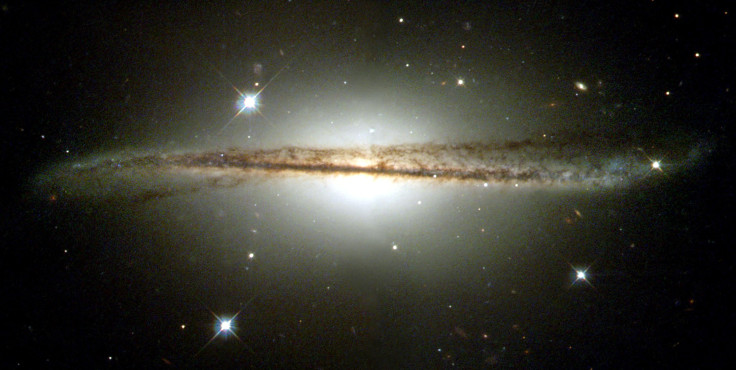Are We Alone? New Analysis Widens Search For Extraterrestrial Civilizations In Milky Way
KEY POINTS
- The question of whether we are alone in the universe remains a mystery
- Efforts to search for extraterrestrial life rely on radio transmissions from other possible civilizations
- A team of researchers expand the search, thereby increasing the chances of finding cosmic neighbors
The researchers of a new study made a breakthrough that significantly expands the search for intelligent life in the Milky Way.
The question of whether we are alone in the universe, or even just in our galaxy, is one that many have been trying to answer. The endeavor known as the search for extraterrestrial intelligence (SETI), for instance, relies on radio telescopes to listen to broadcasts from other potential civilizations that could be trying to make contact as well.
The Breakthrough Listen Initiative in recent years analyzed 1,327 nearby stars within 160 light years from Earth with the aim of detecting artificial transmitters that are extraterrestrial in origin. But in a new study, a team of astronomers from the University of Manchester reanalyzed the available data in a way that significantly improves the search for extraterrestrial life in the Milky Way.
"Team leader Mike Garrett had always been troubled that SETI searches didn't usually take into account the many other cosmic objects that fall within the range of sky a telescope is sensitive to, in addition to the main target," the University of Manchester news release said.

Using the European Space Agency's (ESA) Gaia spacecraft, which is currently creating a three-dimensional map of the Milky Way, the researchers were able to recalculate and develop a technique that expanded the search for extraterrestrial life from just looking at 1,327 to 288,315 stellar objects, the majority of which lie within 160 light years.
The team expanded the search to stellar objects other than the main sequence stars and also more distant stars up to 33,000 light years away. The researchers said that at the farther distances, the potential civilizations would need to have far more powerful transmitters to be detected.
"With distances measured by Gaia, these additional sources can be used to place improved limits on the prevalence of extraterrestrial transmitters, and extend the analysis to a wide range of cosmic objects," the researchers wrote.
The team made an analytical breakthrough that expanded the number of stars that can be analyzed in the search for extraterrestrial life in the galaxy, thereby also increasing the chances of someday actually finding it. The results suggest that only about 0.04% of stellar systems have the chance of hosting life with equal or slightly more advanced radio technology as humans.
"We now know that fewer than one in 1600 stars closer than about 330 light years host transmitters just a few times more powerful than the strongest radar we have here on Earth," study lead Bart Wlodarczyk-Sroka said in the news release.
The team's work is said to have "placed the best limits" to date on the possible prevalence of artificial radio transmitters in the galaxy and, even expanded the search to other types of stellar objects such as white dwarfs.
"Work like this gets us one step closer to the goal of knowing the answer to humanity's most profound question: Are we alone?" study co-author and Berkeley SETI Director Dr. Andrew Siemion said in a news release from the Breakthrough Listen Initiative.
The search is limited to civilizations that have equal to or slightly more advanced radio technology for communication, and not the ones that are still not technologically advanced.
The study is published in Monthly Notices of the Royal Astronomical Society.
© Copyright IBTimes 2024. All rights reserved.






















